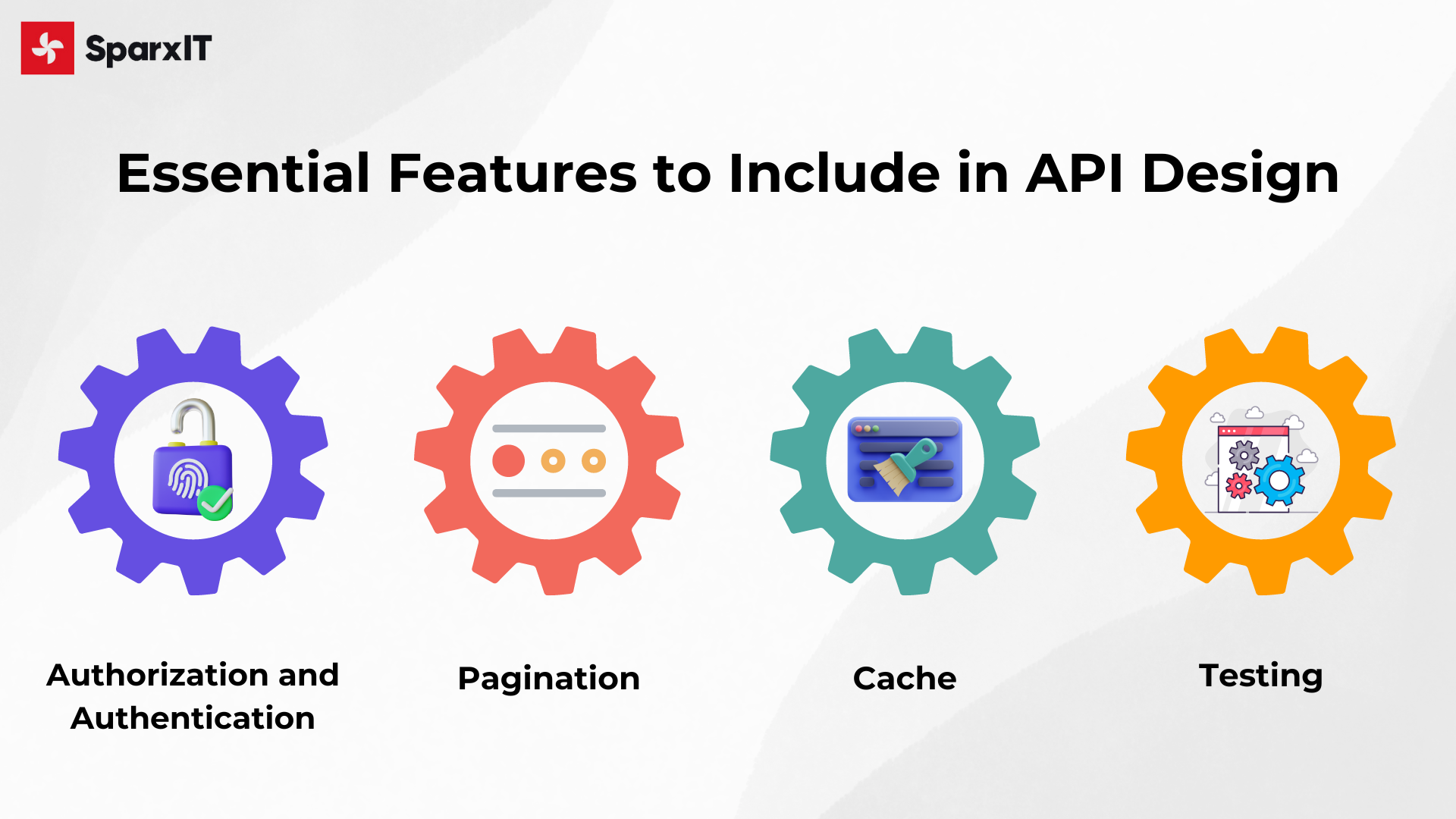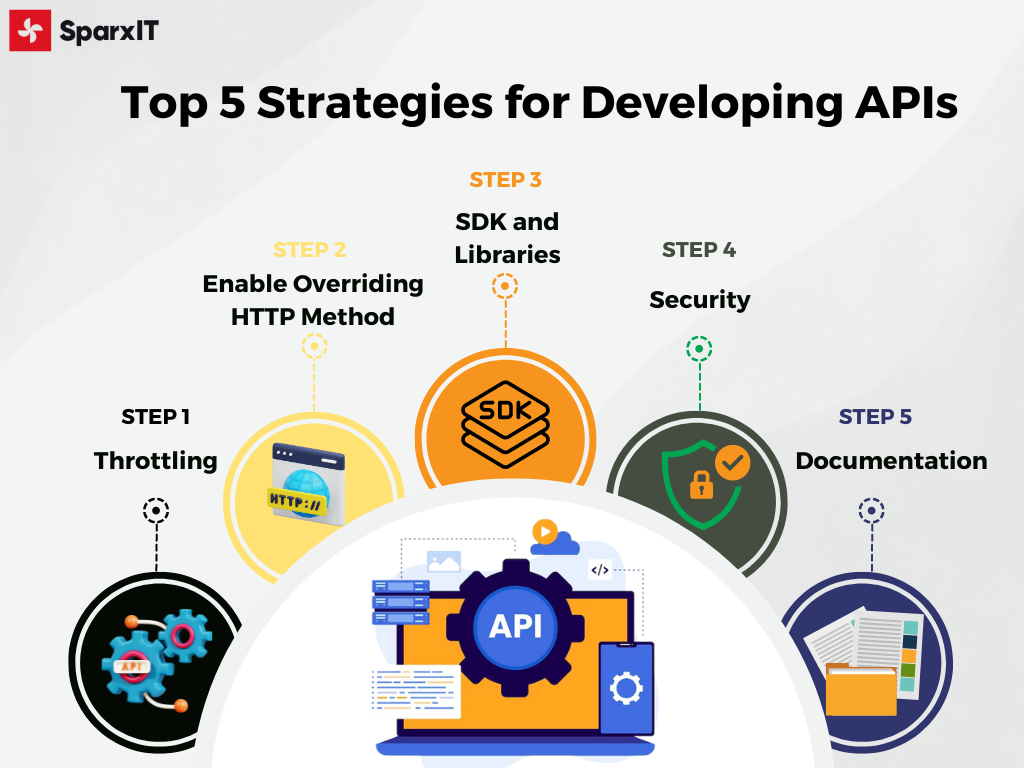If you work in IT or are a tech geek, you have probably heard of the term “API.” APIs are now more crucial to the economy than they have ever been. They are used everywhere. We frequently utilize API software in our everyday lives for various tasks, such as purchasing tickets, logging into Facebook, and sending payments via PayPal.
In addition, there are entertaining APIs like Fun Translations, which converts the English language into Dothraki, Klingon, and Minion. The Pokémon API is another option that gives you access to all Pokémon data in one location. The world of APIs is vast, and with the help of an app development agency, you can create an API that suits your business needs.
What is an API?
API (Application Programming Interface) is a set of guidelines, requirements, and standards that allow an application (or software) to use the capabilities or services of another application, device, or platform to provide better services. To put it technically, it’s a collection of API programming codes that permits data transfer between two software applications. It includes the conditions of data exchange as well.
What are the Types of APIs?
API technology can be classified based on their release policies.
-
Private APIs
The purpose of this software’s interfaces is to enhance internal services and API solutions within the business. Both in-house developers and contractors may use these APIs to create new systems. Even if the app is publicly available, its interface is still only accessible to individuals working with the API publisher or an Android app development company. By using a private approach, the business may fully manage API usage.
-
Partner APIs
API integration application between two parties is accomplished using partner APIs. These are shared with business partners that have inked a contract with the publisher and are also publicly advertised. A business may reap additional income streams by providing its partners with access to data and capability benefits.
In the meantime, it can monitor how exposed digital assets are being used. Additionally, it verifies whether or not the third-party API integration services using its APIs provide a good user experience and ensures that its apps uphold the company’s identity.
-
Public APIs
Another name for public APIs is external or developer-facing. Third-party developers can also access these APIs. You may raise brand awareness with the help of the Public API program. If done correctly, it also enables you to earn more money. Additionally, public APIs may be divided into two groups: open APIs and commercial APIs.
According to the Open API, there are no usage restrictions, and all of its capabilities are available to the public. It also specifies that the API’s definition and associated documentation must be accessible. It further states that tests and applications should be openly accessible.
Commercial APIs allow customers to pay a monthly membership fee or use the services pay-per-use. Additionally, publishers or iPhone app development service providers offer free trials so customers can assess APIs before committing to a subscription.
-
Composite API
The composite APIs combine several services and data and APIs. They are created by merging pre-existing methods from the API that can handle several jobs with a single call. This improves the listeners’ performance in the web interfaces and speeds up execution.
An Insight into Operational Dynamics
Let’s look at an example to help you understand how the API operates. You’ve accessed the ABC app or website to make a travel reservation. You filled out the form completely, including the date of departure, the date of arrival, the flight, the city, and any other pertinent information.
Following submission, a list of flights will appear with information on seat availability, schedule, cost, and many other things. However, how did this occur? It is because of the APIs.
The platform requests the website to deliver such precise data, enabling it to access the database and obtain all pertinent data via an API. The data sent to the platform via API is subsequently displayed on the website in response.
In this case, the API’s role as an intermediary streamlined the data-sharing procedure. Conversely, the flight booking platform and airline website serve as the endpoints. APIs communicate with endpoints using two methods: SOAP and REST.
Now that we understand how APIs work let’s examine the basic terminologies used in API development.
Key Terminology in API Development: Understanding Essential Concepts
You must know the terms below if you are seeking custom API development.
1. API Key
A unique code is passed through computer programs to authenticate a user, developer, or calling program.
2. Endpoint
Endpoints are the points of interaction between an API and a server.
3. JSON
APIs exchange data using JSON (JavaScript Object Notion). This data exchange might occur between two programs, a web application and a server.
4. GET
It is a technique for obtaining information from a specific server resource.
5. POST
It’s a technique for updating or creating resources by submitting data to the API server.
6. OAuth
It is an open-standard API permission framework that provides safe and controlled access to the end users’ data for use by the program or external websites without a password.
7. Latency
Latency is the time an API takes to process a request and return a response.
8. Rate-limiting
Rate-limiting is the process of regulating both the inbound and outbound traffic rates. It can also mean the overall quantity of queries a user makes to the API.
9. API throttling
It’s known as API throttling, when users’ use of APIs is restricted for a set amount of time.
Key Tools for Effective API Development
Several tools are accessible when it comes to developing APIs. The following are some of the most well-known products and technologies that AI development services use to create APIs:
-
Apigee
Google’s API development management tool is called Apigee. This solution is handy when an organization wants to update its legacy apps or make data exchange between apps and services more accessible. It also helps developers create connected apps.
-
Dredd
Dredd is a framework for testing HTTP APIs. It is employed to verify the backend API description. It also extensively examines the description of the API and determines whether or not it has been verified. A dedicated backend development company can easily verify the Dredd framework for more productivity.
-
APIMatic
A platform for developer experiences with website APIs is called APIMatic. Developers use it to create SDKs for their APIs across ten platforms. Moreover, it serves the purpose of maintaining synchronization with API changes.
Additionally, developers may use this tool to convert API descriptions into various formats, including IO Docs, API Blueprint, HAR 1.4, RAML, OAI format, WADL, Postman collections, Swagger, etc.
-
Sandbox
Sandbox provides a quick and simple way to imitate a RESTful API using API definitions. Additionally, it lowers the expense and danger of contacting third-party APIs when testing.
-
Postman
Postman is an interactive tool with automated settings that allows mobile application developers to assess their performance by testing and documenting the API.
-
SoapUI
An open-source testing tool is called SoapUI. It is cross-platform compatible. Moreover, it can automate functional and non-functional tests. It executes Web APIs, security, load, regression, and compliance tests.
-
Swagger
An open-source framework called Swagger creates APIs. Well-known companies, including GettyImages, PayPal, Apigee, and Microsoft, use Swagger.
-
JMeter
JMeter is open-source software. It is applied to RESTful API performance testing.
Essential Features to Include in API Design
There are a few things you should consider before you begin developing APIs. These ideas will assist your team stay cohesive and serve as a catalyst for the development of your API.

-
Authorization and Authentication
Authentication is the process of confirming one’s identification. However, authorization refers to determining whether the authenticated user is allowed to act on a particular source. For instance, an authorized user, John, can access resources but not create new ones.
Among the most widely used specifications for controlling authorization and authentication are OAuth, OAuth2, and JWT.
-
Pagination
Your database will expand over time. When that occurs, you’ll notice that some resources are retrieved more slowly than usual. The most popular methods for handling this scenario are pagination or object caching.
All paging entails is figuring out how much information should be shown and how often. Additionally, sorting ensures that the user receives the data according to the specifications, conditions, and modifications.
These elements contribute to a quick reaction time, little processing time, and strong security.
-
Cache
Creating a Cache approach will enable you to obtain resources quickly. Your requests will cost less if the data is prepared for consumption in an in-memory database. Redis and Memcached are two tools for creating a caching strategy.
-
Testing
Software testing and API testing are incredibly similar. API testing incorporates testing the APIs directly and the part of integration testing to determine whether they fulfill performance, functionality, security, and reliability expectations. An API testing service provider can perform all the testing to access and resolve any issue.
Best Practices: Top 5 Strategies for Developing APIs
Above, we examined the essential components of an API and the best tools for developing APIs for web and mobile applications. However, this will be in vain if you don’t adhere to the proper API building guidelines. Numerous techniques exist for developing APIs.
Let’s take a look at the top 5 practices for comprehensive API development.

1. Throttling
App throttling is the best strategy for rerouting traffic overload, protecting against DoS (Denial of Service), and backup APIs.
2. Enable Overriding HTTP Method
Because some proxies can only handle POST and GET requests, you must let your RESTful API take precedence over HTTP requests. The custom HTTP Header X-HTTP-Method-Override allows you to accomplish this.
3. SDK and Libraries
Provide the AI-powered solutions team with the essential resources to expedite service development and deployment. One way to achieve this is to offer resources with reusable code and processes.
4. Security
It is essential to ensure your API is safe, but not at the expense of usability. If a user takes five minutes to authenticate, your API could be more user-friendly. Token-based authentication is a valuable tool for securing your API.
5. Documentation
Another excellent practice you should consider is providing a broad range of documentation. For an API, you need to write comprehensive documentation that explains every step of the process to other mobile app developers, allowing them to leverage that knowledge to deliver an exceptional user experience.
A well-crafted API documentation will enhance API efficiency and save API costs and implementation time.
What is the Cost of Building an API?
On average, building a simple API will cost around $20,000. This figure indicates that you are developing a secure, documented, feature-packed API with the services of a trusted API software developer working with an experienced API development company.
Conclusion
It’s reasonable to say that APIs have become more critical in business collaboration and software development. APIs have been demonstrated to increase business earnings by facilitating the necessary technology connectivity. Additionally, you can create and incorporate the required API for your business.
After reading this post, you must have understood APIs, how they operate, and how to create an excellent API for your business. You can hire offshore developers to develop an API for your product or enterprise.
Our remote development team comprises dedicated engineers with a reputation for creating magnificent APIs. Thus, why delay? Contact us to begin developing your API!





